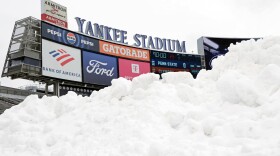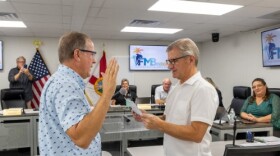America has waged "war" on poverty since the 1960s, and official numbers suggest substantial progress. Take poverty among the elderly: Between 1959 and 2003, the number of elderly Americans living in poverty dropped from 35 percent to just over 10 percent.
Yet the figures don't take into account many factors that may be pushing elderly people into a fragile economic existence, despite incomes that technically place them above the official poverty line.
That's because the official poverty level has been calculated using the same formula since it was developed by Mollie Orshansky, a Social Security Administration statistician, in the 1960s. It is based on an estimate of the minimum diet required to feed a family of four. But the amount a family spends on food has dropped dramatically since the '60s, from 30 percent to 12 percent of total income today.
Not accounted for are the other costs -- housing, transportation, clothing, child care and medical expenses -- that eat up a substantial amount of a household budget.
When it comes to senior citizens, a sizable chunk of income is also claimed by health-care costs. Alternate measures of poverty suggest that, all other factors being equal, if out-of-pocket health care costs were taken into account, 19.3 percent of elderly Americans would be classified as poor.
This "hidden poverty" isn't limited to the elderly. Under the official poverty measure, 12.5 percent of Americans are considered poor. But for years, experts have argued that the official model doesn't accurately identify who is poor in America.
In 1995, a panel of experts convened by the National Academy of Sciences proposed a new poverty measure that would take into account cash assistance and the value of such government programs as food stamps and housing subsidies, which supplement household income. It would also account for costs associated with taxes and with work-related expenses, such as child care. And it would consider the wide variation in housing costs across the country.
The National Academy of Sciences measure resulted in a poverty rate that included fewer families on public assistance but many more working families. Using that measure, more families would be considered poor in the Northeast and West, where housing costs are substantial, while fewer families would fall under this category in the South and Midwest.
Since 1979, the U.S. Census Bureau has also been experimenting with various alternatives to Orshanksy's model. Some look at the differences in making calculations using pre-tax versus post-tax income; others account for food stamps, Medicare and Medicaid as income. The latest such report from the Census Bureau, released in February, showed these models produced national poverty levels ranging from 8.3 percent to nearly 20 percent.
Still, it's unlikely the federal government will revamp the official poverty measurement any time soon. The reason is politics, says Amy Glasmeier, an economic geographer with Penn State. Ultimately, decisions on the poverty level reside in the White House. And as Glasmeier observes, "What president would want to see the poverty rate go up during his tenure?"
Copyright 2022 NPR. To see more, visit https://www.npr.org.








